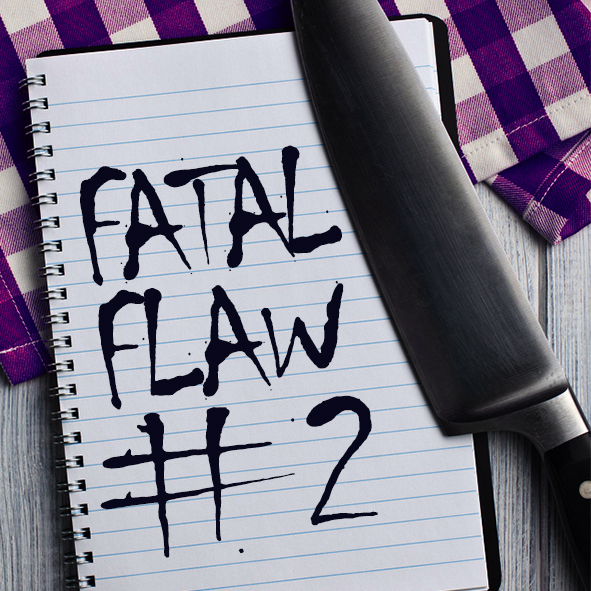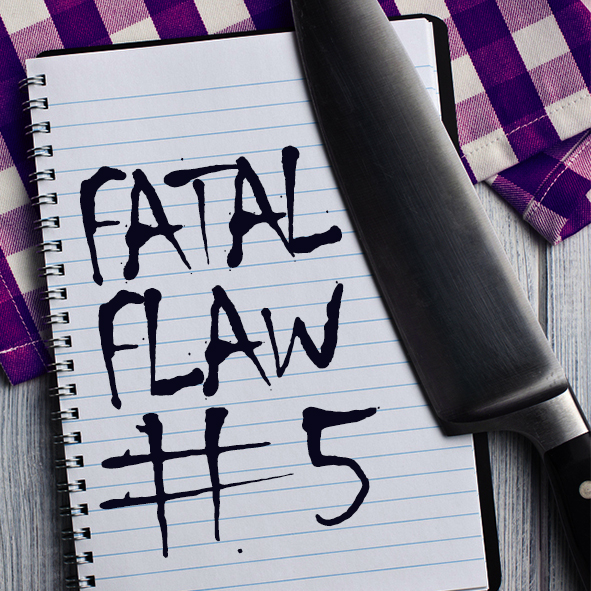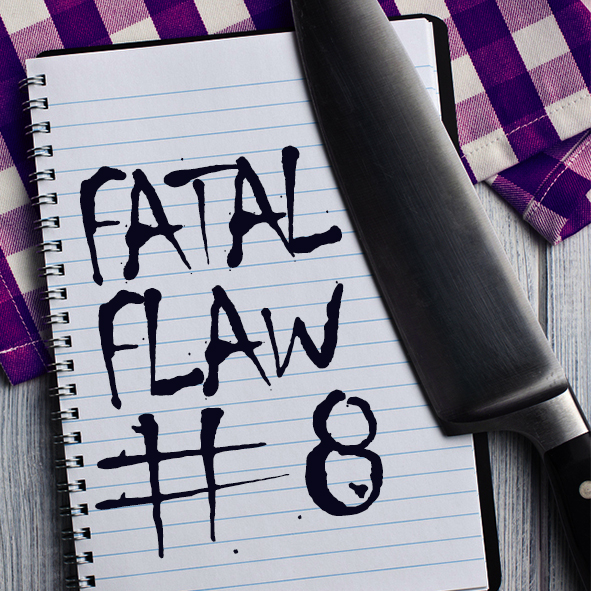Nothin’ Happenin’: Finding Your Story
This month our editors are tackling Fatal Flaw #2: Nothin’ Happenin’. Rachel Starr Thomson introduces the topic, showing how writers often fail to get right into a scene’s present action, which is important in order to engage readers. Backstory, excessive narrative and explanation, and too much character musing can stall a scene.
Openings are a science unto themselves, be they openings for an entire book, for a chapter, or for a scene. One principle, however, is generally agreed upon: it is best to open with something happening.
We might take a cue from the Bible here: “In the beginning,” we are told, “God created the heavens and the earth.”
We can surmise that in fact, God did several other things before he created. That he took some time to think, to plan, to survey the darkness and the deep—whatever was in existence at that time—or whatever other wonderful things might have gone on in that cosmic brooding that preceded the creation explosion. But the Book opens with action.
Getting to the Story
Because our stories don’t actually spring full-fledged from our pens, we writers tend to need time to ease into them, and so a lot of our drafts open in one of these ways:
- With a lot of description, most often of the weather.
- With backstory or explanation of what’s about to happen.
- With a character thinking or reminiscing. (This does not qualify as “something happening.” In fact, the state of thinking can be notably less active and interesting than even the weather.)
- With a character doing a lot of mundane things before getting to anything pertinent to the story.
And then finally, we write our way up to where the story really begins—several paragraphs or even whole chapters after we begin.
The problem here is that while we are getting warmed up, readers are trying to enter the story world—and if they can’t get in soon enough, if the opening bores or feels irrelevant or rambling, they are liable to move on before we do. All the way to a different book.
Take this opening for a suspense novel:
BEFORE:
It was a gray, rainy day. The drizzle had started that morning and not ceased. By now puddles had formed around the storm drains and headlights glared off the wet pavement. The clouds overhead were thick and flat like a heavy blanket lying over the entire city, with no break anywhere for the sun to come through even though it was only midafternoon.
Cars passed by in single file, following each other too closely and honking when the traffic got tighter. Skyscrapers rose on every side, their sides gleaming black and mirroring the traffic flow. On the corner of Smyth and Davidson, patrons snaked out the door of the local Starbucks, some shielding their heads with umbrellas while others pulled collars up and shivered in the dampness. Across the street was a drug store, and a lone homeless man sat by a fire hydrant on the corner, his cardboard sign waterlogged and its markered plea for help running into a black streak.
It was the kind of day typical in the Midwest in March. It made people unhappy, depressed, wishing they were at home watching TV instead of going to work, driving through town, dealing with one more gray day after a long and oppressive winter.
The winter days never seemed to end. Daylight Savings Time had cut the days off at their knees all the way back in November, and ever since it was one dark, cold, snowy, damp, drizzly day after another. Eventually winter started to lighten into spring, but it was March spring—the kind that’s so cold and damp and dark in its own right that it hardly seems like an improvement.
Casey Miller’s gun hand shook as she stared down at the body, rain-soaked and pale on the sidewalk.
The “Before” example isn’t bad writing. It’s got some vivid images, in fact, and mood setters. But the story does not start until Casey Miller looks down on that body, and readers are unlikely to stick with a page-and-a-quarter’s worth of description long enough to get there. Can some of the setting details be included after the fact? Sure. In fact, if you open with something happening, you can cut back to scene details to create contrast and make the ugly opening words starker.
AFTER:
Casey Miller’s gun hand shook as she stared down at the body, rain-soaked and pale on the sidewalk.
Skyscrapers rose into a heavy, clouded sky all around them; patrons holding umbrellas or pulling up their collars against the cold rain snaked out the door of the Starbucks across the street. Cars passed in single file, honking impatiently, splashing the rain in the gutters.
No one else saw him.
He was dead, and only she could see.
In place of observations on the weather, we now have two characters—one alive, one dead—a vivid setting, and a mystery. All in less time than the “Before” paragraph took to describe March in the city. We’ve found the story. And more importantly, so have our readers.
Your turn:
Do your openings tend to fall into the patterns described here? Take another look at your WIP. Does the story actually start somewhere later than the book opens? On the other hand, have you read books where the story opens too abruptly—so much in the middle of things that you can’t connect to the characters or tell what’s going on? How might you strike a balance? What authors do you feel are masters at getting right into action?









My college writing teacher used to call these alarm clock stories: alarm clock rings, feet pressed on a cold floor, look out the window and muse about the weather, sit down and tell your dog what you’re feeling!
IN a class of twenty she’d get about three variations of these. BORING!
Absolutely true. I’ve seen that exact opening many times–with variations for fantasy, sci-fi, historical, romance, etc. It’s actually pretty funny after a while!
I agree with the more concise approach of the second vignette. It’s the way I like to write. However, many writers insist on flowery descriptions, and some of the great classics begin with what we might call purple prose today.
My eyes glaze when paragraph after paragraph describes the protagonists and/or surroundings. Give me action. Now.
Agreed, generally. Authors may need to write the introductory stuff, and then edit it out once they’ve created the world in their minds. On the other hand, I don’t like the tendency (especially in movies) to begin with an irrelevant action sequence just to grab the reader’s/viewer’s attention, and then get on with actual plot once the hook is over.
My story begins with a business man closing up shop and day dreaming about his proposal to his lady friend. I have outlined the entire book with the “Writer’s Journey,” by Cambell. The beginning is the ordinary world of the MC. Since most ordinary worlds are blase, is weather and his thoughts of his proposal enough Medias Res? It is heavily storming outside with lightning and thunder. The weather will play heavy in the rest of the novel via a life threatening auto accident The inciting incident begins well within 10% and about an hour of elapsed time or less. The inciting incident is a proposal rejection. 10% leading to the inciting incident equates to three scenes and two sequels.
Thanks
JW